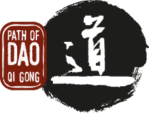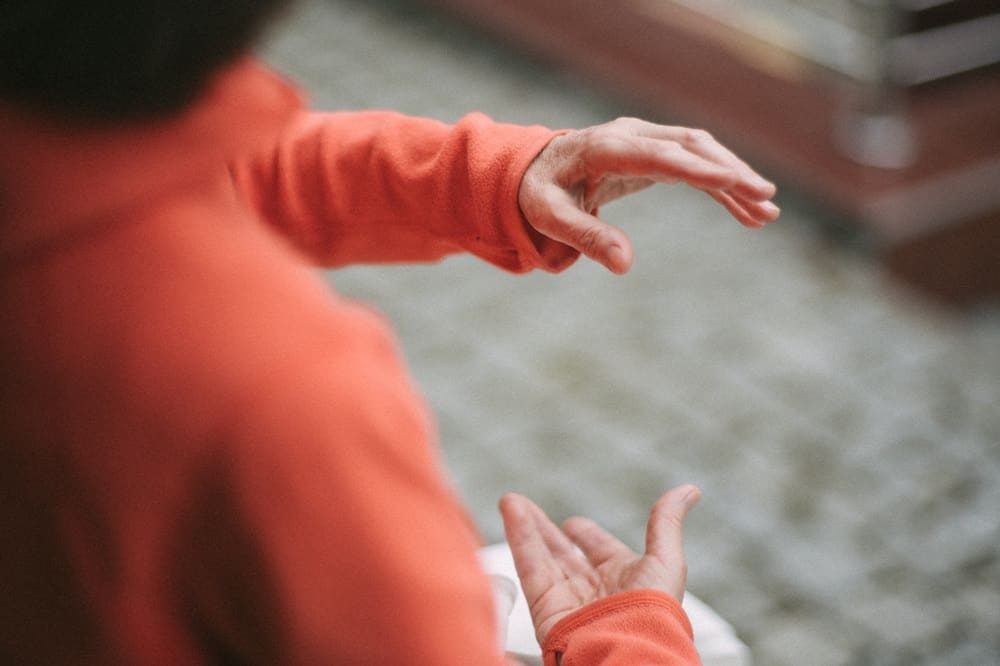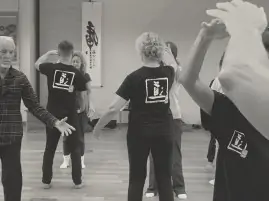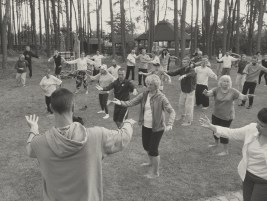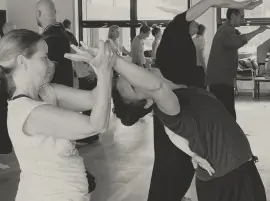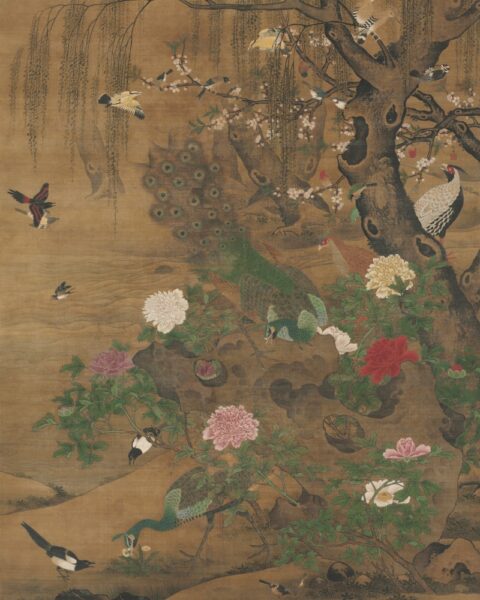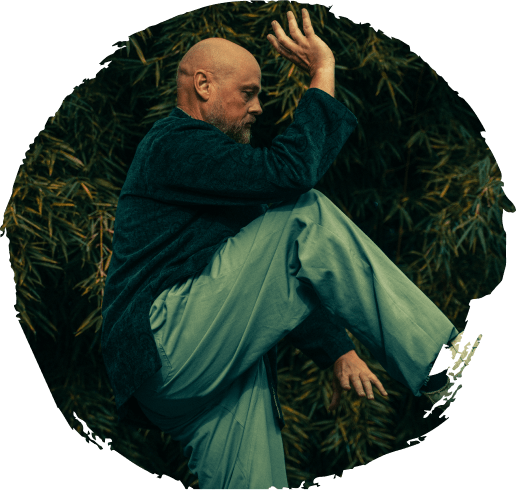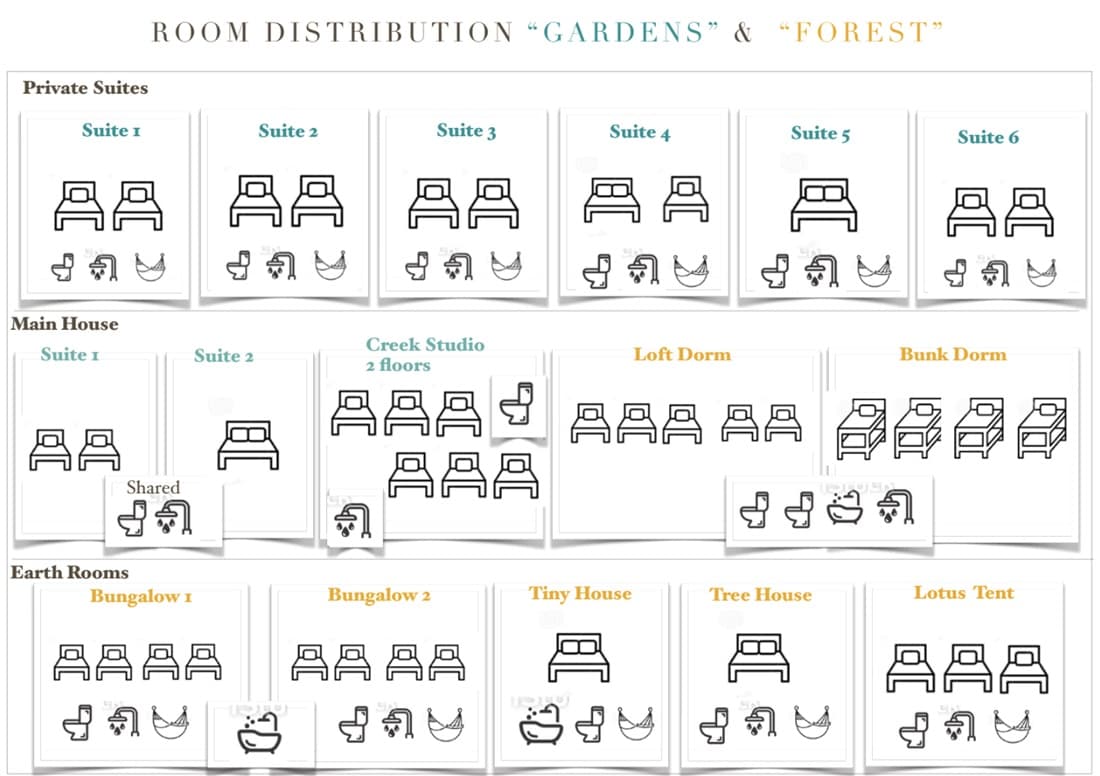"Don't do sports!"
Excerpt from a talk by Ron Timm
In class, you often hear me say: “don’t do Yoga, don’t do sport!”.
I say: ‘don’t do Yoga’. Yoga is a very popular practice in the West, coming from the East - so whenever people want to do Qi Gong, they might have done Yoga before and then they come to my class and expect to do Qi Gong the way they have done Yoga.
As for sport, people know it from physical education classes and the gym and when they come to Qi Gong they have no other background. They have only one idea of how to exercise. How can you do something differently if you have never done it another way? We have done physical activity mainly as sports. And if you do Qi Gong like you do sport it will definitely not be right.
That is the western approach. People rarely think about it and probably the teacher doesn’t tell them: don’t do sports. I will say it because I don’t want you to do it this way. I can never stress it enough. It is at the core of whether you will develop a meaningful practice. This is what I see and what I did myself: for years I did Qi Gong in the way of sport and I did Qi Gong in the way of Yoga, that I did in the way of sport. What I say is based on my observations and my own experience.

A different approach to working with the body
When starting the Qi Gong practice try not to refer to your previous experiences. It can be challenging as in the beginning it is impossible to do it right because it is new and you have no background. It is the same when we talk about meditation and why we talk about it using the negatives: it is not this, neither this, nor that. What it is and how it is meant to be done, you don’t know yet, but we can tell you already how not to do it.
We don’t do Qi Gong like sport, or like Yoga, because they are result oriented and performance driven. They are activities undertaken in order to achieve something, a workout. While my Qi Gong Master used to say:
"Don’t work out - work in"
"Don’t work hard, work heart"
It was his way to say: don’t do sport. Because in sport we work hard and not with the heart (consciousness). Very often Yoga is done like that: you see the positions and you want to achieve them. You stand there, your face is red, you are sweating, your heart rate goes up, you hold your breath, make noises as you breathe, and so on. In fact Yoga is not supposed to be done like this. Yet we have no other examples, or experiences. We have done sports like this, now we do Yoga like this, finally we do Qi Gong like this.
The qualities of good practice
Whenever I did Taiji, the Master would come very close and touch my forehead. There should be no sweat. Only between your upper lip and nose, it should be a little humid when you practice, but not your forehead. And of course your shirt should not get wet.
Then the Master would put his ear close to your nose and mouth, and then he always said: if you lose your breath it’s not Taiji. This was his way of saying: “don’t do sport!”.
The meaning of inner practice
This is referring to Yoga but it might as well be applied to Qi Gong: in terms of a straightforward translation, the term ‘Yoga’ comes from a Sanskrit word, which means ‘yoke’ in English. It is a harness that you need to put the horse in so that it will pull a carriage. This is a good metaphor. If you think about it: a horse is a good thing and a carriage is a good thing. If you have both that is already great but they will be of limited use if you don’t have the yoke. You need it to put the two things together.

The practice of inner connection
When you say: ‘I practice Yoga’, you literally say: ‘I practice connection’. However, if you ask people: what is it that you actually do then? They will tell you: ‘I stand on my head, I do the posture.’ Where is the connection here? While if they say: ‘I stand on my head’, they could also reply: ‘I connect the lower and the upper body’. Or: ‘I practice connecting the front and back, left and right, outside and inside’. Here you have the eight directions that we are always looking for in Qi Gong. One could say doing a headstand is connecting Heaven and Earth but people rarely put it this way. In the West, this is not our habitual frame of reference.
However in the practice of Qi Gong it becomes apparent that it is to do with inner connection and inner alignment. We can experience how the alignment connects the mind and the body, the Yin and the Yang. In the end the question is: what do we practice, what is our Yoga? We try to connect with Wu, emptiness, in order to connect with Dao. From Jing to Qi, to Wu, to Dao. This is the way of cultivation in what we do.
If we go back to the original practices and their meaning they shouldn’t be different now from what they were in the past. We should find the core: it is the very same human, the same body, the same life on the same earth. Ultimately, it is the problem of human existence, to know about yourself.
